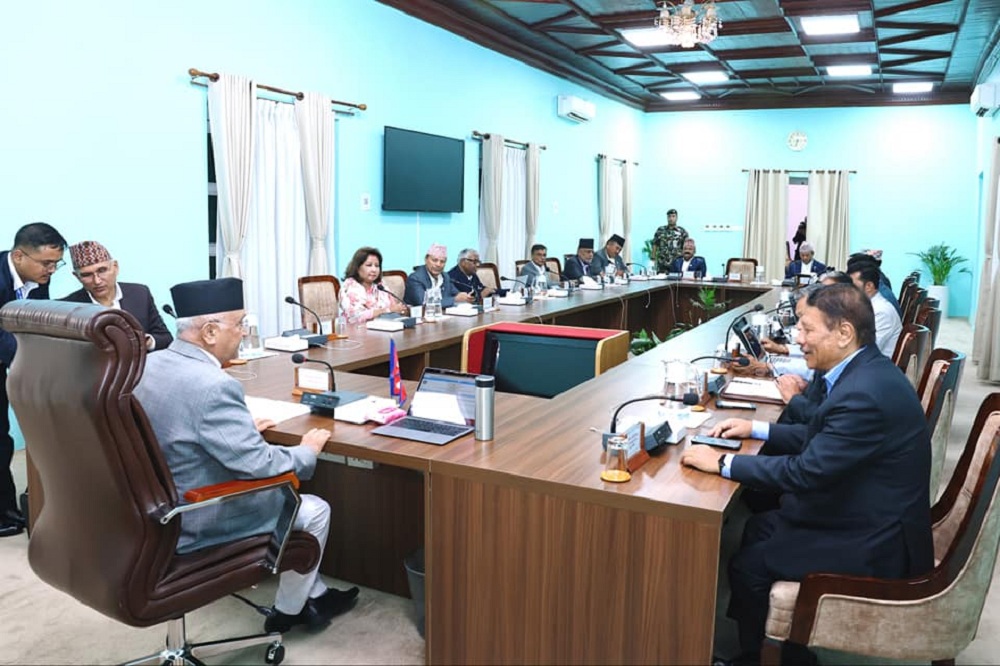Forest Ministry says ‘no need to obstruct Nijgadh project’

Kathmandu. The Ministry of Forest and Environment said it would not create obstacles to environment-friendly development amid rising public concern over the ecological costs of the proposed international airport in Nijgadh, Bara.
“Considering from multiple points of view—development of the country and growth opportunities—there is no point in obstructing the development of this mega project with fickle views,” said Secretary Bishwa Nath Oli during a sub-committee meeting of the parliamentary International Relations Committee on Thursday.
“The law requires us to carry out compensatory planting of trees in the ratio of 1:25. And we will ensure strict enforcement of this rule,” he told the meeting. “We are also preparing to create a nature fund to help us reach our goal of planting compensatory trees.”
null
The project envisions building a modern airport in Nijgadh, Bara district, 175 km from Kathmandu in the southern plains. The hub will be the biggest in South Asia in terms of area, covering 8,045.79 hectares once it is completed. More than 2.4 million small and large trees will have to be chopped down to build the swanky airport.
Surendra Upreti, assistant professor of International Economics at Tribhuvan University, said there were positive and negative impacts of development, particularly with regard to hydropower and airport projects. However, there should be proper balance to reduce adverse impacts, he said. “Such mega projects should not be obstructed in the name of environment as this can create a far-reaching effect on the country’s economy,” he said.
Former prime minister and member of the parliamentary International Relations Committee Madhav Kumar Nepal said that many trees would have to be chopped down for the development of the airport, and that it was a big concern for the environment. “But the concern is not as big as it has been made out to be. We need to cut trees, but not 2.4 million trees,” he said.
“The airport will be developed in three phases. The first phase may last 10-15 years. The development of the second and third phases could take many years, and the government will need to acquire forest land considering its development for the next 100 years or more. And based on future requirements, 8,045.79 hectares of land will be acquired where 2.4 million trees are located,” Nepal said.
“Obviously, we are worried about the environmental impact, and a healthy debate is needed to explore alternatives to minimise environmental degradation,” said Nepal. However, the situation is becoming different. “In Nepal, a dangerous trend has existed for a long time—stopping the development of mega projects. This project, however, should not become a victim of this trend.”
The Forest Ministry said that in the first phase, the airport would require 1,900 hectares of land, 1,600 hectares of which is forest area. The airport will be constructed on 990 hectares. More than 448,000 trees need to be cut down in the first phase. The ministry said that 4,700 hectares of land would be required for the compensatory planting of trees which totals 7.5 million saplings in the first phase.
Sanjiv Gautam, director general of the Civil Aviation Authority of Nepal, said that the proposed airport would handle 15 million passengers in the first phase. “The construction of the second phase will be required only if the airport’s passenger traffic crosses the 15 million mark,” he said.
“Nepal has recorded a healthy air passenger growth over the past decade, but reaching the 15 million mark may take many years. However, in view of the expected growth in the next 50 to 100 years, we have to acquire land. This doesn’t mean that we have to cut down all 2.4 million trees now,” Gautam said.




















